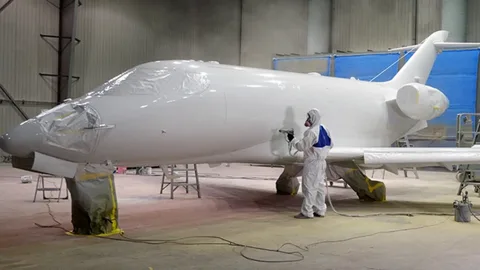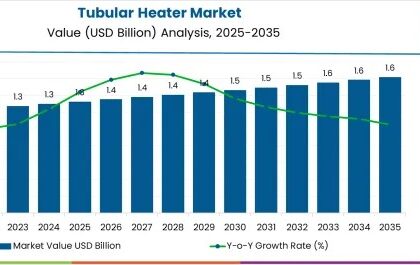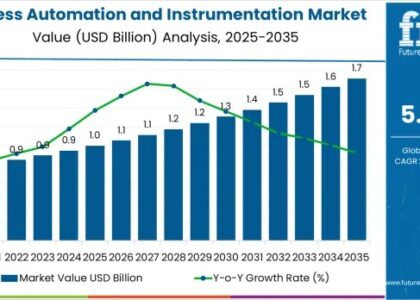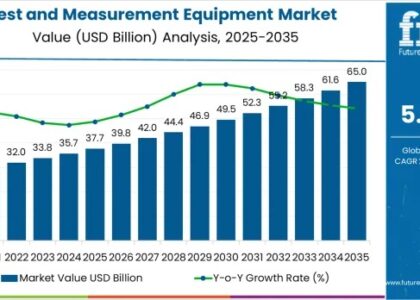The aerospace accumulator market was valued at USD 3.2 Billion in 2025. Over the forecast period from 2025 to 2035 the market for 5G mm Wave will expand with a growth at a remarkable CAGR of 1.9% reaching a projected USD 3.8 Billion by 2035. Factors such as technological developments in hydraulic systems, growing demand for lightweight materials, and higher investments in aerospace engineering innovations are fueling the growth of this market.
Modern aerospace systems are marvels of complexity—where every movement, from a wing flap to a landing gear deployment, is precisely calculated and hydraulically powered. Behind the fluid dynamics of flight lies an unsung hero: the aerospace accumulator.
It doesn’t roar like a jet engine or dazzle like a cockpit display, but it quietly stores, stabilizes, and releases energy—ensuring pressure is available when needed, systems respond when called, and critical operations unfold without delay. In an industry where reliability is non-negotiable, accumulators are the silent assurance beneath the surface.
Get Ahead with Our Report: Request Your Sample Now!
https://www.futuremarketinsights.com/reports/sample/rep-gb-13848
More Than a Pressure Buffer: Supporting Mission-Critical Functions
At a glance, an aerospace accumulator might seem like a passive hydraulic component. But its role is pivotal. It balances pressure fluctuations, absorbs shocks, and maintains system integrity during transient demands.
From braking systems and landing gear actuations to emergency deployments and flight control surface adjustments, accumulators act as high-performance reservoirs. They help maintain operational readiness even if the primary system falters—serving as a built-in backup that can spell the difference between smooth flight and critical failure.
Overshadowed by Engines and Avionics
While aerospace headlines focus on jet propulsion breakthroughs or next-gen avionics, accumulators remain largely invisible—both physically and in public perception. Yet they’re just as critical. As aircraft systems become more electrified and integrated, the pressure to deliver fast, reliable, and redundant hydraulic performance only grows.
In commercial aviation, defense platforms, and space systems alike, accumulators quietly underpin the growing complexity of flight operations—providing the foundational stability needed for advanced tech to perform under pressure.
Flight-Ready Across Extremes
Aerospace environments are unforgiving. High altitudes, temperature swings, vibration, and G-forces push every component to its limit. Accumulators must withstand it all—operating flawlessly from runway to re-entry.
Whether it’s a piston, bladder, or diaphragm type, every accumulator is engineered to precise tolerances and tested under extreme conditions. The design must balance lightweight construction with maximum pressure containment, ensuring efficiency without compromising safety. These systems often act in milliseconds, with no margin for error.
The Integration Equation
Accumulators don’t operate in isolation—they’re woven into the broader hydraulic and energy systems of an aircraft. Integration with sensors, control software, and monitoring units is becoming standard as aerospace platforms migrate toward predictive maintenance and smart systems.
This raises the bar for suppliers, requiring deeper collaboration with OEMs and Tier 1 integrators. Accumulators now need to be more than mechanical—embedding digital capabilities to relay health status, pressure trends, and cycle counts in real-time.
Exhaustive Market Report: A Complete Study
https://www.futuremarketinsights.com/reports/aerospace-accumulator-market
Sustainability and System Evolution
Even in sustainability efforts, accumulators have a quiet but potent role to play. In fly-by-wire and more-electric aircraft systems, where hydraulic demand is reduced or localized, accumulators enable precise energy deployment—contributing to lower weight, reduced fuel consumption, and optimized system architecture.
As future aerospace design leans into modular, hybrid, and electric platforms, accumulators will adapt—supporting the shift with smarter designs, lightweight materials, and energy-saving configurations.
Hidden, Yet Indispensable
Aerospace accumulators may never dominate headlines or branding campaigns, but their value is embedded in every takeoff and touchdown. They’re the silent guardians of pressure, performance, and preparedness.
As the aerospace industry chases higher efficiency, autonomy, and safety, it will lean ever more on components that deliver reliably without noise or fanfare. In that quiet realm of responsibility, accumulators will continue to prove indispensable—working in silence to keep flight in motion.






